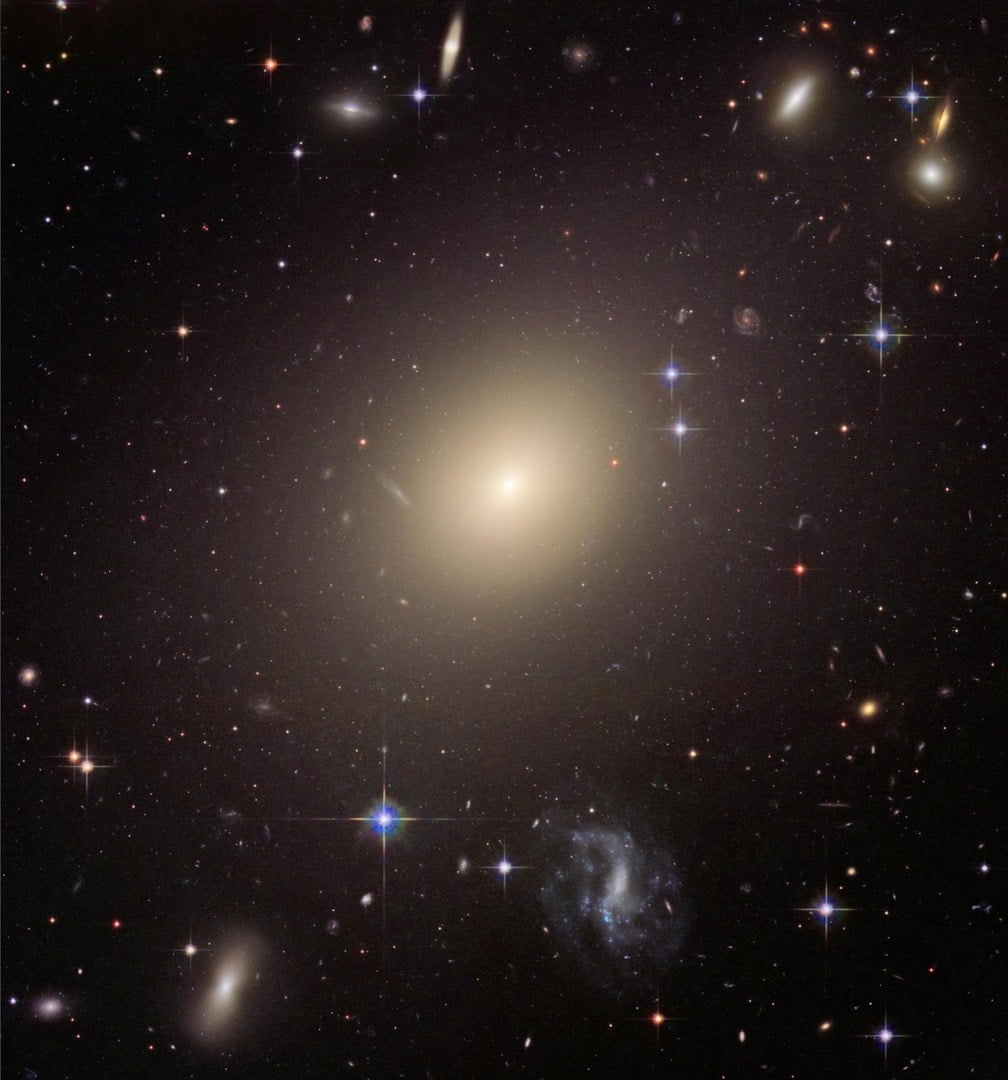The Cosmic Microwave Background is one of the bedrock pieces of evidence for the Big Bang. It's described as the cosmic afterglow from the Universe's birth. However, new research calls into question our understanding of the CMB and what it tells us about the evolution of the Universe.
About 380,000 years after the Big Bang, the Universe had expanded and cooled enough that protons and electrons could combine to form hydrogen atoms. This made the Universe transparent, and photons could move freely. The CMB, or relic radiation, comes from this time. It's the first light that could freely travel through space and has been travelling for more than 13 billion years.
 *This image shows the heat map of temperature fluctuations in the cosmic microwave background from the Nine-year Wilkinson Microwave Anisotropy Probe. The colour differences show 13.8 billion-year-old temperature differences. Image Credit: By NASA / WMAP Science Team - Public Domain*
*This image shows the heat map of temperature fluctuations in the cosmic microwave background from the Nine-year Wilkinson Microwave Anisotropy Probe. The colour differences show 13.8 billion-year-old temperature differences. Image Credit: By NASA / WMAP Science Team - Public Domain*
The CMB is brightest in microwaves but was discovered with radiotelescopes. It's a faint background glow unassociated with any stars or galaxies. It's not isotropic and has a lumpy pattern. These lumps are minor temperature differences stemming from density variations that are the seeds of galaxies and cosmic structures. The fine details in the CMB can tell us a lot about how the Universe evolved, but are difficult to discern because things like galaxy clusters have modified the glow.
Since the launch of the JWST, our understanding of the Big Bang has faced more profound questions. The telescope has discovered massive, fully-formed galaxies in the early Universe whose existence contradicts our cosmology models. According to new research, these early-type galaxies (ETGs) could account for some of what we see as the CMB. If so, then our understanding of the CMB is impaired.
 The JWST has discovered ancient galaxies from only a few hundred million years after the Big Bang. They're large and bright and pose questions for the standard model. Could their light make up a portion of the Cosmic Microwave Background? Image Credit: NASA/ESA/CSA/STScI.
The JWST has discovered ancient galaxies from only a few hundred million years after the Big Bang. They're large and bright and pose questions for the standard model. Could their light make up a portion of the Cosmic Microwave Background? Image Credit: NASA/ESA/CSA/STScI.
The research, "The impact of early massive galaxy formation on the cosmic microwave background," is published in Nuclear Physics B. The authors are Eda Gjergo and Pavel Kroupa. Gjergo is from the School of Astronomy and Space Science at Nanjing University, while Kroupa is from the Helmholtz-Institute for Radiation and Nuclear Physics at Bonn University.
"The greatest achievement of precision cosmology has been the measurement of the anisotropies observed in the cosmic microwave background (CMB)." - from The impact of early massive galaxy formation on the cosmic microwave background.
"The universe has been expanding since the Big Bang, like dough that is rising," said Kroupa in a press release. "This means that the distance between galaxies is increasing constantly. We have measured how far apart elliptical galaxies are from one another today. Using these data and taking into account the characteristics of this group of galaxies, we were then able to use the speed of expansion to determine when they first formed."
Research shows that ETGs, called elliptical galaxies, used vast amounts of gas to form hundreds of billions of stars. It likely didn't take that long, which is something the JWST results are in line with. "Our results now show that this entire process only lasted for a few hundred million years – which is relatively short on a cosmological time scale," said Dr. Gjergo. "During this time, the nuclear reactions in these ignited stars were intensely luminous."
Gjergo and Kroupa calculated the illumination provided by these early stars. "These conditions imply that massive ETGs were some-10^4^times brighter than their present-day luminosity," the authors explain.
They found it must've been so bright that the light is still visible today. "Our calculations indicate that some of the cosmic background radiation actually originates from the formation of the elliptical galaxies," says Gjergo. "This accounts for at least 1.4 percent of the radiation but could even account for all of it."
Gjergo and Kroupa point out that the light from ETGs has been largely overlooked as a foreground component of the Universe's glow. They say it's a non-trivial source of contamination. "Given the extreme brightness of massive ETGs during their formation and their relative proximity at that epoch, it becomes unavoidable to consider their contribution to the background radiation," the authors write.
 This figure from the research shows the bolometric luminosity for an ETG. Its peak luminosity occurred at only 265 million years after the Big Bang. Image Credit: Gjergo and Kroupa, 2025, Nuclear Physics B.
This figure from the research shows the bolometric luminosity for an ETG. Its peak luminosity occurred at only 265 million years after the Big Bang. Image Credit: Gjergo and Kroupa, 2025, Nuclear Physics B.
"Even in our most conservative estimates, massive ETGs account for 1.4% up to the full present-day CMB energy density," they write.
1.4% seems small until you examine the consequences.
The irregularities in the CMB, which are differences in temperature and gas density, show that the early Universe wasn't uniform. They acted as seeds for galaxy formation; without them, the Universe would be much different. With no galaxies or stars, we wouldn't even be here.
The greatest achievement of precision cosmology has been the measurement of the anisotropies observed in the cosmic microwave background (CMB)," the authors write. "Those CMB anisotropies are understood to be the seeds that later evolved into large-scale structures under the influence of gravity.
However, these tiny CMB irregularities only amount to a few thousandths of a percent. If the light from the ETGs accounts for 1.4% of the CMB, then those irregularities are dwarfed in comparison.
Scientists know that foreground galactic and extragalactic sources contaminate the CMB signal. In the past, scientists have warned of the risk involved in cleaning CMB data of these contaminating sources, lest real sources be dismissed as contaminants. If this potential 1.4% is dismissed too easily, our understanding of cosmology will be in error. If we accept it as real, we must update our Standard Model.
Our results are a problem for the standard model of cosmology," says Kroupa. "It might be necessary to rewrite the history of the universe, at least in part.
"In the view of the results documented here, it may become necessary to consider cosmological models other than the flat-ΛCDM paradigm," the authors write in their conclusion.
Press Release:Early galaxies contribute to the "afterglow" of the universe
Research:The impact of early massive galaxy formation on the cosmic microwave background
 Universe Today
Universe Today
